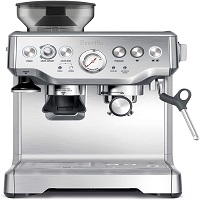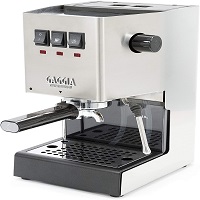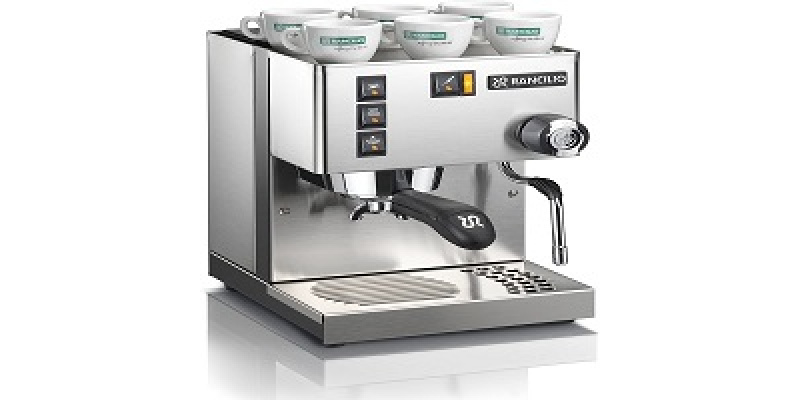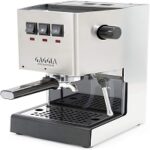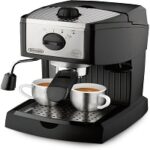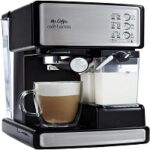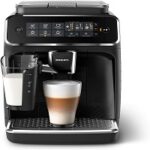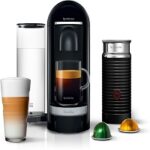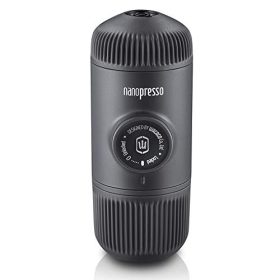Best Espresso Machines in 2022 - Buyer's Guide
Are you looking for the best espresso machine for your home? Not sure how to pick the right one from the hundreds available? This is a big decision; you are not buying a new toothbrush here!
In this review, we cover several different categories to help you find the right one to fit your style, kitchen, and budget. Just go through our list below and find the class that suits your needs.
We’ve summarized some of the best choices from each category, so you don’t have to spend hours researching, or worse, spending hundreds on a bad espresso machine!
What types of expresso machines are on the list?
You are ready to learn how to choose the right espresso machine. Are you? Well, first you will need to decide the type of best machine for your personal needs. This will take you one step closer to preparing a good cup of espresso.
Manual Espresso Machines
The original espresso machine was introduced in 1905. These require skills and practice. If you want to control everything about your espresso coffee and milk froth, they are best on producing a high-quality shot. You basically do everything, from pushing to grinding, to creating the foam and hopefully enjoying it after.
Semi-Automatic Espresso Machine
If you like the pleasure that comes from the practical preparation of espresso, but do not want to do every last step yourself, a semi-automatic machine may be the best thing. You control the amount of coffee you put in the filter basket, use the grinder with how much pressure, start & stop the pump to control the water you use.
Since semi-automatic machines are the most common for home use that’s the reason this article focuses more on those machines.
Fully Automatic Espresso Machines
Also known as ‘super-automatic machines’, the one-touch operation is what these machines have. They will allow you to program your preferences of the power of coffee and milk froth, in order to choose your later programmed drink without problem. If you do not have the time and do not want the hustle and bustle of a more practical experience, these are a great choice.
However, in terms of the quality of espresso shots, they do not match the semi-automatic and manual machines, but for those who are pressed for time and want something easy and quick and without losing a lot of quality, they fit perfectly.
Portable Espresso Machines
Also known as travel espresso makers or compact espresso machines, they are great for people with small spaces in their kitchens or living in vans. Many of them do not even require electricity, making them the latest in portability. However, they vary greatly in the quality of the espresso, so make sure you spend your time choosing wisely.
Pod Espresso Machines
The last ones are pod espresso machines. Although appropriate, they definitely do not make the best espresso in terms of quality, in my opinion. However, we have recommended one below because they are hard to beat for convenience.
Commercial Espresso Machines
As the name suggests, commercial machines are designed for restaurants and cafes. So you will rarely see one in the cafeteria premises of a bartender at home. They are expensive, but this is because they are built to handle high-volume of espresso. However, there are some that cross the line of commercial and home use, which we discuss below.
COMPARISON TABLE OF ESPRESSO MACHINES
- Semi-Automatic with Grinder
- Dimensions: 13.7″ x 11.5″ x 13.2″
- Capacity: 61 oz.
- Semi-Automatic
- Dimensions: 9.2″ x 11.4″ x 13.3″
- Capacity: 1.8-liter reservoir. 0.3-liter boiler
- Semi-Automatic
- Dimensions: 9.5″ x 8″ x 14.2″
- Capacity: 42 oz.
- Semi-Automatic
- Dimensions: 8 x 10 x 11
- Capacity: 35 oz.
- Semi-Automatic
- Dimensions: 12.6″ x 8.9″ x 11.2″
- Capacity: 1.7 liter, 0.5 liter (milk tank)
- Semi-Automatic
- Dimensions: 13″ x 5.9″ x 13″
- Capacity: 35-oz tank
- Super-Automatic
- Dimensions: 9.7” x 14.6” x 17.0”
- Capacity: 60-oz
- Super-Automatic
- Dimensions: 11" x 15.3" x 14.4"
- Capacity: 60-oz
- Pod
- Dimensions: 9” x 13” x 12.8”
- Capacity: 40-oz
- Manual
- Dimensions: 6.14” x 2.8” x 2.44”
- Capacity: 2.7 oz
10 Best Espresso Machines for Home Use
Now without waiting any longer, let’s help you find the best espresso machine for home use that will make you that perfect espresso shot:
Specifications:
- Semi-Automatic with Grinder
- Dimensions: 13.25″ x 12.5″ x 15.75″
- Capacity: 2 liters
- Pressure: 15 bar
Breville does not require any introduction in the name of the coffee industry. The Barista Express can handle everything from beans to espresso in a minute. Now bring the café to your home and enjoy the third wave of exceptional coffee with the four keys formula that makes rich flavored velvety coffee.
The Barista is loaded with many features. The integrated grinder can freshly grind your required amount of beans into the portafilter. Whichever bean you are using, you can control the grind size with dial to your preferred choice.
With the powerful steam wand, you can produce a micro-foam milk texture that will not only enhance the flavor but enables you to make latte art, too.
It has a dual manual or automatic operation option, thus making it user-friendly for both beginners and experts. The water temperature is digitally controlled to ensure the correct temperature of water to extract the perfect taste.
It comes with a one-year limited warranty.
Pros
- Very good machine and consistent for different skill levels
- Ability to quickly switch between brewing and steaming
- Customized settings or presets
- Stainless steel steaming pitcher
- Sleek design comes in three different colors
- Built-in Grinder
Cons
- A bit expensive
Specifications:
- Semi-Automatic
- Dimensions: 9.5″ x 8″ x 14.2″
- Capacity: 42 oz.
- Pressure: 15 bar
- Panarello Steam Wand
Gaggia’s espresso machines are trusted to be deep-rooted in the coffee machines making industry. It is one of the top semi-automatic and entry-level espresso machines with commercial-grade features.
No need to rush to the café to grab your cappuccino as the Panarello wand can make expert-level coffee by dispensing hot water, frothing, and steaming at the same time. The 58mm commercial-sized brass portafilter is chrome-plated and ready to serve the big company. The large reservoir and three-way solenoid valve let it compete against the expensive models.
The heating time is quite fast, 20 seconds for steam ready and 5 minutes for brewing ready. The boiler is made up of aluminum, and although the body is made of stainless steel and the controls are made of plastic. This classic and versatile machine is promised to last you for years for its sturdy build and easy operation.
Pros
- High quality stainless steel espresso machine
- Delivers amazing espresso every time even if you are a beginner
- Commercial grade steam wand
- Small enough to be compact will look great in any kitchen
- Suitable for using with ESE pods
Cons
- Switching between brewing and steaming takes some time
Specifications:
- Semi-Automatic
- Dimensions: 9.2″ x 11.4″ x 13.3″
- Capacity: 1.8-liter reservoir. 0.3-liter boiler
- Adjustable brew pressure: 11 bar
This portafilter commercial-grade machine is one of the long-lasting and models by Rancilio. The design is highly classic, with a linear look that will go by the look of any house.
This latest version of Silvia houses a 58mm portafilter that is proven to give you a fantastic extraction, just like a commercial coffee machine. The brass boiler is chrome plated and has a capacity of 0.3 liters, the largest capacity among all its competitors.
Now you don’t have to wait between two shots of coffee with the quick recovery time and remarkable steaming power. The free-range motion steam wand is ideal for steaming your perfect cup of coffee. The water reservoir can be refilled during the operation or removed from the top at any time.
The steam pressure can be controlled precisely with the commercial-style knob. It is accompanied by two single and double-sized filter baskets, a coffee scoop of 7 grams, and a plastic tamper.
Pros
- Durable and long-lasting
- Delivers amazing espresso every time even if you are a beginner
- Got impressive pressure for extraction and steaming power
- Group head and portafilter is commercial grade
- Got 3 seperate thermostats for steam, espresso, and boiler
Cons
- Got no option to program settings
- A bit heavy its almost 31 pounds
Specifications:
- Semi-Automatic
- Dimensions: 8 x 10 x 11
- Capacity: 35 oz.
- Pressure: 15 bars
- Manual steam wand
This sleek design and compact profile machine by DeLonghi is efficient and adjusts perfectly in even smaller places. It has a unique self-priming function to avoid annoying start-up preps.
The advanced brewing and temperature maintaining system allow you to make cup after cup without any wait. The 3 in 1 filter holder has one espresso shot, two espressos shot, and an easy serve espresso pod. The 35-ounce water tank is visible and easy to remove, refill and clean for a hassle-free job.
If you are a froth lover, this machine has a manual frother to create creamy and rich froth by mixing milk and steam. With this machine, you can brew any coffee of your choice, from espresso to latte, tasting exactly like your favorite coffee from the coffee bar.
Pros
- Durable and long-lasting
- Delivers amazing espresso and capp every time even if you are a beginner
- Got impressive pressure for extraction and steaming power
- Got two different thermostats
- Easy to clean after each use
Cons
- Got no option to program settings
- Cup space is a bit small so it wont fit larger cups
Specifications:
- Semi-Automatic
- Dimensions: 12.6″ x 8.9″ x 11.2″
- Capacity: 1.7 liter (water tank), 0.5 liter (milk tank).
- Pressure: 15 bars
- Automatic frother with carafe
This semi-automatic and 3 in 1 (cappuccino, latte, espresso) maker is a robust machine enabling you to be your own Barista. The 15-bar electric pump brews your drink strong enough to make it bold and bring out the maximum flavor. The machine has an automatic shutdown system when the brewing and foaming cycle is complete.
The milk frother is automatic and removable for easy cleaning. This espresso maker is straightforward to use, as you just have to make your selection of shots and grounds, fill in the milk, and select your brew. Ta-da… your drink is ready.
An added feature is the ultimate recipe book, which comes with the machine to guide you to make original-style coffee drinks right at your kitchen counter ranging from the Choco Nutty Latte to Espresso Martini. The packaging includes a filter for double and single espresso and a measuring cup.
Pros
- Removable milk reservoir for storage
- Removable water reservoir for easy cleaning
- Easy to use
- Automatic milk frother
Cons
- It can be loud
Specifications:
- Semi-Automatic
- Dimensions: 13″ x 5.9″ x 13″
- Capacity: 35-oz tank
- Pressure: 15 bars
- Milk Frothing: Manual steam wand
Even with a water tank of 35 ounces, this sleek and intelligent version takes up a mere 6-inch place over the counter. This traditional machine has a manual cappuccino system to create a creamy, rich, and thick foam of your choice.
The thermos block technology heats up to the ideal temperature in just 40 seconds.
If you need to brew more espresso shots, you don’t have to worry about brewing many cups. The rapid cappuccino system maintains the temperature, and you can make shot after another shot.
The body is made up of stainless steel, and it comes in three classic colors to match your kitchen or office interior. The machine is infused with a 15 bar pressure that is promised to give you a professional result. The controls are adjustable and can be changed to achieve your perfect taste.
Pros
- Sleek and smart design
- Easy to use
- Twin brewing cycle
- Milk frother
- You can use ESE pods
Cons
- It takes a bit of time to use
Specifications:
- Semi-Automatic
- Dimensions: 9.7” x 14.6” x 17.0”
- Capacity: 60-oz
- Milk Frothing: Automatic frother with carafe
This black-colored fully automatic beast by Philips is your go-to choice when you want to make a variety of aromatic coffees. The Latte-go milk system can top up your coffee with silky smooth froth at the perfect temperature.
The 12 steps ceramic grinder gives you various options for grinding your beans from powder to coarse grind. The 2-part milk system can be washed easily within 15 seconds. With the Aquaclean filter, you can go on to make 5000 cups without worrying about descaling the machine. LatteGo is claimed to be the fastest to clean the system of milk efficiently.
Say hello to the My Coffee Choice menu, where you can easily select your favorite beverage from three different options. You can also customize the strength and quantity of your drink along with temperature and milk amount. You do not have to break your bank with the pocket-friendly price.
Pros
- Intuitive touch display for drink selection
- Easy cleaning of milk compartment
- 5 excellent choices of coffees
- Automatic milk frother
- 100% ceramic grinder
Cons
- It takes a bit of time to use
- A bit noisy
Specifications:
- Semi-Automatic
- Dimensions: 11" x 15.3" x 14.4"
- Capacity: 60-oz
- Milk Frothing: Advanced frother
This dream espresso machine is for all those espresso addicts who want to customize their coffee in a hassle-free way.
You can always opt for freshly ground beans for a fresh taste or go for pre-ground beans stored in the second chamber. The brew unit is extractable,
making it easy to clean, and it is self-adjusting up to 2-3 shots. The manual frother creates creamy, rich, and frothy drinks of your choice.
The bean container and 60 Oz water reservoir can be removed easily and refilled during the operation. The dual stainless steel boiler provides even heat distribution and instant reheating to avoid intervals between two shots.
Although with a lot of customizing options, the control panel is easy to use. The menu setting is adjustable according to cup size, temperature, and strength, and there you go with the perfect espresso.
Pros
- Very quiet machine
- Easy to use
- Compact design
- Advanced milk frother
- Easy to clean
- Burr grinder integrated on machine
Cons
- It takes a bit of time to use
Specifications:
- Pod Machine
- Dimensions: 9” x 13” x 12.8”
- Capacity: 40-oz
- Milk Frothing: Aeroccino milk frother
This ergonomic design by Breville is fully automatic, but it can be used with Nespresso Vertuo Capsules only. You can brew five different cup sizes according to your need and choice. If you desire to drink an iced latte or coffee, just pour it over ice and enjoy your cold beverage. The 14-ounce water tank is removable and easy to clean and refill. The machine comes with a complementary set of Nespresso Capsules.
Now give the perfect finishing look to your coffee with the Aeroccino 3 milk frother for a velvety finish. The rich crema, superior taste, and entire body of the coffee is the kind of experience you never had before. It is easy to make commercial-grade single-cup coffee or espresso cups with an easy-to-use single-touch feature.
Be kind to the earth and recycle the aluminum capsules through the Nespresso recycling program. This new brewing system in Vertuo uses the centrifugation technology developed by the coffee experts to carefully combine the origin and roasting of different coffee blends.
Pros
- Automatic storage and capsule ejection
- Efficient heat up time up to 15 seconds
- Smart coffee maker using centrifusion technology
- Seperate milk frother makes it easy to clean
- Single-button operation
Cons
- It doesn't work with any other pods or capsules other than Nespresso.
Specifications:
- Manual
- Dimensions: 6.14” x 2.8” x 2.44”
- Capacity: 2.7 oz
This mini travel coffee machine is the upgraded version of Minipresso by Wacaco. It is perfect for you if you are a coffee lover and always on the go like office, camping, traveling, and whatnot.
Be your Barista wherever you are by brewing the perfect cup of espresso. All you need is finely ground and complex tamped coffee, and there you go. The Nanopresso can produce up to 18 bars of manual pressure with the new pumping system.
The hit point is that this Nanopresso is manual only, and you don’t need any batteries or electricity to do the job. The S-shaped cover is perfectly designed with durable and soft material to save it from any damage or scratches while fitting perfectly around it.
You don’t have to worry about cleaning it as all the parts are detachable to clean it thoroughly. It needs 15% lesser force to pump as compared to other models.
Pros
- Up to 18 bars of manual pressure
- Travel-friendly size and ergonomic design
- Lightweight
- Quick and easy to use
- Sturdy built perfectly for traveling
Cons
- Not suitable for making large quantities
Buyer’s Guide to Choosing the Best Espresso Machine for Home Use
Make your morning aesthetic by getting an espresso machine to acquire a drink or brew of your type. What factors should you consider while buying the best espresso machine for your home?
-
You can prepare good espresso with espresso machines. But it is also possible to prepare other coffee specialties.
-
You can purchase an espresso machine as a single-circuit or dual-circuit machine. Often, single-circuit machines are more suitable for home use.
-
As with other coffee machines, regular descaling is important for espresso machines. It guarantees the correct function and a wholesome coffee.
Price
Budget is a real constraint whenever we consider something new to purchase. A common mistake that new espresso holders make is they put less focus on the grinder and end up having an aesthetic machine with a large dual boiler. So, check the grinder and its performance too before making a choice.
Preferences
An important question that should be asked before purchasing the best home espresso machine is what kind of drinks do you like? Lattes, cappuccinos or Americanos? Get a type of machine that meets all of your requirements. Because not all the machines heat 16oz lattes efficiently.
Don’t make a purchase in hassle. Otherwise, you will end up with the wrong instrument. For large milk drinks, a dual boiler or heat exchanger is suitable. But if you are a fan of espressos or Americanos, then a single boiler machine can be ideal for your morning routine.
Usage
How many times in a day are you going to use your machine? Is one cup of brew enough for your day to start? Or do you like to intake multiple cups mostly throughout the day? The family also comes ahead. You are indeed not the only person in your family who wants to begin his day with a cappuccino or lattes.
For a single person or a drink, a machine with a single or small boiler can perform an excellent job. But if you live in a joint family where you have to serve multiple drinks with different flavors, then machines with an oversized boiler are recommended.
Space
It’s important to consider where you should put your espresso machine in a kitchen. Get a tape and measure your area of placement. If you don’t have a measuring tape, then analyze the place for better estimation.
Proper installment of espresso machine in your kitchen is also essential for adequate cleaning and maintenance. Whether you get a plumed or non-plumed mechanism, you have to clean the mess after the job has been done for optimal functioning of the espresso machine.
Grinder for Espresso Machine
A grinder in an espresso machine determines the flavor of your coffee. While choosing, don’t look up with the question in mind which grinder will go better with espresso? Because the grinder has to be paired with you, not with the machine. It’s a part of personal choice. Research well about it before making a purchase.
Features
Here are some of the features to help on what to look for in an espresso machine:
Single or Double Shot
In the simplest terms, these describe the volume of espresso you extract from an espresso machine. A single is about 1 ounce of espresso made from 7 grams of ground coffee. A double is approximately 2 ounces of espresso made from 14 grams of coffee, though these days we are seeing a bigger and more intense double shot of espresso.
Filter Basket
Pieces inside the portafilter that holds the ground coffee. Many espresso machines have interchangeable filter baskets for different sizes of espresso coffee. Some also have a filter basket created to hold an ESE pod.
Portafilter
The part that holds the filter basket, which you usually close in place before you pull an espresso shot. The portafilters usually come in different diameters, from 40 to 60 mm, where the commercial standard is 58 mm. This matters if you are buying a tamper or spare filter basket.
One-Touch Function
A feature that allows you to make espresso coffee at the touch of a single button. Many super-automatic espresso machines allow you to program a specific drink according to your preferences, then prepare it with a single button. For example, you can program the ideal water temperature, the amount of coffee used in a drink, and the amount of steamed milk you prefer. Later, you can create your own personalized one-touch drink.
Heating System
The interior part heats the water for making espresso coffee and steaming milk if your espresso machine has a milk frother. The power and design of the heating system of an espresso machine affect how quickly it heats up and if it can maintain a stable temperature.
Single-Boiler
A heating system that uses a boiler to provide hot water to make espresso and steam for foaming milk. With one boiler heating system, you cannot extract a glass of espresso and steamed milk at the same time. Some top-level espresso machines have two-boiler systems, which means you can boil milk with steam and extract a glass using separate boilers at the same time.
Drip Tray
Movable section where you rest your cup while getting an espresso shot. The drip tray catches every drop after you have removed the cup (or carafe). When you remove them, you can empty and clean them without having to take the whole espresso machine to the sink. Some espresso machines allow you to remove the drip tray to place a cup or longer cup under the filter.
Steam Wand
The part of your espresso machine that boils steamed milk for cappuccino and latte. Some steam wands operate with a button; others require you to rotate a switch that controls the volume of steam that passes through the rod and into your milk. Some milk foaming systems draw milk through a valve that foams and heats it, allowing you to pour the milk directly into the drink.
Water Tank
Container that holds the water you use to make espresso and to generate steam for foaming milk. The larger your water tank, the more espresso coffee you can pull without refilling it.
Burr Coffee Grinder
Most people agree that a grinder is the best choice for durability and grinding quality, which is vital when making espresso. Whether with hand or electric clamps, a grinder crushes coffee beans into equal size, optimizing flavor extraction.
Ground coffee for espresso should be much finer than for instant coffee because espresso is brewed much faster. So the most important feature about a coffee grinder to use with your espresso machine is that it produces a very fine and uniform grind.
If you like the old-school approach, a hand grinder gives you good control over the coffee grounds you produce. Plus, it does not use electricity and saves you money.
Pros & Cons of Espresso Machines for Home Use?
Pros
- Taste can be refined manually
- Ideal for baristas and lovers of excellent espresso
- Often also suitable for coffee pods
Cons
- More complicated to use than fully automatic espresso machines or capsule machines
- Partly higher price
How Should an Espresso Machine be Descaled?
The cleaning and decalcification of portafilter machines involve a certain amount of effort that is worthwhile. After all, residues and dirt particles can change the entire aroma. Every owner of such an espresso machine should plan regular cleaning intervals.
- Decalcification is the soft hardness range that takes place twice a year.
- If the water hardness is medium, it is sufficient to descale the machine every 3 to 6 months.
- If the water is hard, it should be descaled once every three months.
The hardness of the water can be determined with the help of a test strip.
The Cleaning of the Portafilter Espresso Machine
The individual, removable components of the portafilter espresso machine such as the shower strainer and portafilter require thorough cleaning. The first step is to dissolve the descale in warm water. Then the two parts are soaked in warm water. Then rinse everything under running water and put it back in the espresso machine. A descaling agent directly from the manufacturer is recommended for descaling the machine. We have summarized further information on cleaning a portafilter machine in the following list:
- Loosen the boiler and heat exchanger and close the coffee dispenser
- Measure out the water and descaling agent and pour it into the water tank
- Switch on the device and operate the lever until the liquid comes out of the brew group exit
- Repeating the process several times
The water tank is then filled with clean, freshwater. Afterward, the machine will fill up with water again after being switched on. Now the user should flush the heat exchanger for one minute and repeat it three to five times. The portafilter machine is then ready for the next brewing process.
The Right Coffee Beans for the Espresso Machine
The espresso beans should be ground very finely with a grinding degree of 2 to 3. In this way, the water absorbs sufficient aroma within a short time, which ultimately ends up in the cup. It is important to distribute the espresso powder evenly in the portafilter to avoid air channels. Compared to normal coffee beans, espresso beans are generally darker and more aromatic.
It is worth investing a little more money, as the differences in taste are enormous. The main difference is made by the roasting and roasting process. The coffee beans for classic coffee beans are not suitable for the espresso machine. They produce too high acidity, while espresso beans contain less acid and are therefore more digestible.
Storage of Coffee Beans
Incorrect storage can lead to moldy beans that must not be processed under any circumstances. Immature, broken, or eaten pieces of shell in the packaging are a sign of inferior quality. The roast date, degree of roasting, and origin of the beans provide information about the taste profile to be expected.
It is only when the green coffee is processed that it is decided whether the bean ends up in the espresso or in the coffee. The espresso requires a longer roasting process that takes around 15 to 18 minutes. The roasting time of normal coffee beans is 10 to 15 minutes. High-quality espresso beans are usually dark brown, shiny, and oily due to the coffee oils.
Conclusion
Breville Barista Express is our Top Choice. This is a semi-automatic machine with a grinder and it comes with a 67-ounce water tank and a half-pound bean container. It will make happy both beginners and baristas with its easy-to-use and professional-grade features. It is without a doubt our top choice of the best espresso machine.
Gaggia Classic Pro it’s our Second Choice. It is one of the top semi-automatic and entry-level espresso machines with commercial-grade features and the best of all its price compared to barista express.
FAQ
There is no specific product recommendation because the market is constantly changing. New products are added, others are no longer produced. Those interested in buying should heed the information in this guide to be well prepared for the purchase. Perhaps the models presented above in this portafilter machine comparison can provide suggestions. It is important to consider beforehand: How much space do I have for the machine, how much money can I spend, and which equipment features are indispensable for me?
Pre-ground coffee gives you more convenience of not having to grind your own coffee. Pre-ground coffee is best for those who do not have time. However, for lovers of details, you will need coffee beans and you need a machine that grinds and produces coffee beans. Coffee beans are fresher and taste better.
The costs for a portafilter machine are quite different and depend mainly on the factors manufacturer, material, and range of functions. A good espresso machine is available for around $400-$600. Professional branded devices and particularly high-quality portafilter machines can also cost $2,000 and more.
The main advantage of grinding your own coffee at home is that freshly ground coffee tastes way better than pre-ground coffee. No matter what brewing style, a cup of coffee made from freshly ground beans will taste superior.
The perfect brewing temperature for espresso is 92 to 96 degrees Celsius. Normal coffee, on the other hand, needs 86 to 96 degrees Celsius. So that the coffee stays at an optimal drinking temperature of 65 to 70 degrees Celsius for a long time, a portafilter machine is worthwhile, with which you can preheat the coffee cups.
Disclosure: There are affiliate links in this comparison. If you click on one of the product links and buy a product, we will receive a commission for this. However, there are no additional costs for you. Thanks a lot for this! Learn More

